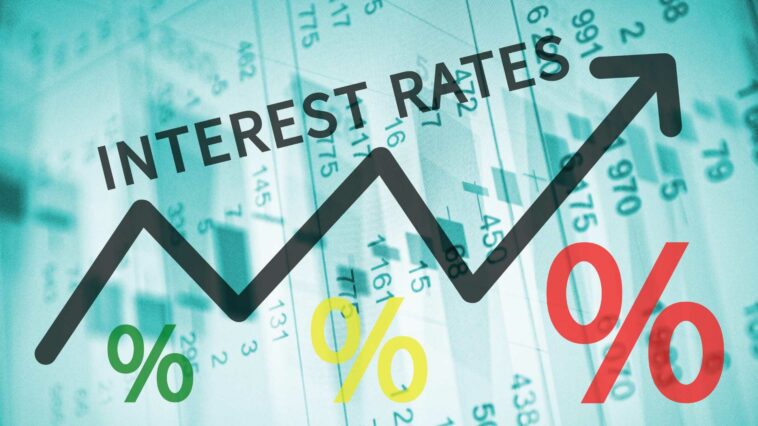Whether you’re looking to buy a home or invest in a rental property, understanding the interest rates in your area can help you make an informed decision. The interest rates vary widely from one place to another and your mortgage lender will need to know these rates in order to provide you with a loan that suits your budget.
Federal funds rate
Among other things, the Federal funds rate influences the price of borrowing money. It also indirectly influences longer-term interest rates. It is a monetary policy tool that has been used by the Federal Reserve to promote employment and price stability.
Historically, the federal funds rate has ranged from zero to 20%. It is a target rate that the Federal Open Market Committee sets. It is a reference rate for banks. It influences other interest rates, such as the prime rate, which is the rate at which banks charge the highest-creditworthy borrowers.
Federal Open Market Committee members make decisions about rate adjustments based on key economic indicators. The Federal Open Market Committee meets eight times a year. The FOMC typically votes on whether to adjust the federal funds rate.
The Federal Open Market Committee is made up of four presidents of Reserve Banks. They meet in conjunction with the president of the Federal Reserve Bank of New York. The committee meets eight times a year and makes decisions about rate adjustments based on key economic metrics.
The Federal Open Market Committee also sets target ranges for the federal funds rate. These target ranges are determined according to economic conditions and the goals of the Federal Reserve.
The target federal funds rate is usually set at a range of 3.75% to 4%. It may be higher or lower than that. The target federal funds rate is a reference rate that banks use to calculate their borrowing and lending policies.
The Federal Open Market Committee sets the target federal funds rate, and it is one of the most important monetary policy tools that the Federal Reserve uses to influence the economy. It has been used to stimulate the economy by cutting the rate during the Great Recession, and it has been used to combat inflation in the past.
Treasury note yields
Investing in Treasury notes is a relatively safe way to invest in government debt. But the value of these notes can change, depending on the state of the economy. And if the government is going to increase interest rates, Treasury yields will go up.
The 10-year Treasury note yield is a commonly used benchmark for other interest rates. The yield is an effective annual interest rate that is expressed as a percentage. If the Federal Reserve increases its federal funds rate target, Treasury yields will go up.
In the past, the 10-year Treasury note yield has often been above 3 percent. However, yields have been low lately due to subdued inflation and a slow economic growth. The yields have remained stable in April, but will likely rise until the yields reestablish themselves at last year’s highs.
Higher yields can also indicate stronger economic growth. In this case, the Treasury note yield may be an indicator of optimism for the economy. However, it’s important to consider potential losses from surging inflation.
Higher yields are also a signal that inflation is rising. In this case, investors may be hesitant to invest in other investments. This can cause investors to purchase T-notes instead of riskier investments.
Investors who buy notes to maturity can earn some of the highest real Treasury note yields available over a 50-year period. However, the data for the ex ante real yield suggests that investors got crushed during the early 1980s.
In that time, the ex ante real yield was negative between September 1973 and August 1975. However, the vast majority of months during that time period had positive real yields.
Similarly, the ex ante real yield was negative in October 1978 and October 1980. The yields returned to positive real yields during the following months.
Savings rate
Whether you’re saving for your child’s college education or retirement, the savings rate is one of the most important financial components. A higher savings rate means more income towards your nest egg.
Savings rate is the percentage of an individual’s disposable income allocated to saving. It can be determined by dividing a person’s monthly savings by his or her gross monthly income.
The savings rate is determined by many factors. Among them are the economic conditions, social institutions, and individual characteristics.
The savings rate can be a good indication of the financial health of an economy. It also takes into account government expenditures and personal income.
Economic conditions such as recessions and economic stability will affect savings rates. In a period of extreme economic instability, people will delay spending to prepare for uncertain futures.
Savings rates can also be affected by changes in interest rates. Banks and financial institutions will increase their interest rates to attract savers. The higher the interest rate, the higher the savings rate.
The amount of money saved is influenced by factors such as income, wealth, and time preferences. Individuals tend to save less when they are comfortable with their income.
The savings rate is also influenced by social institutions and collective spending behaviors. When a country curtails its economy in order to slow the spread of a virus, for example, it will increase its savings.
Savings rates are typically influenced by the Federal Reserve, which increases its benchmark federal funds rate. When the Fed raises the rate, financial institutions will increase their borrowing costs. This is known as the “substitution effect”.
When interest rates are high, individuals are more inclined to spend. On the other hand, when interest rates are low, individuals are more inclined to save.
Capitalization
Having an interest rate that is on the upswing is a great way to reduce your operational liquidity and cut your corporate profits. Moreover, interest rates also reduce your expected cash flow.
Market capitalisation, on the other hand, is a measure of the size of the financial sector. The market cap of a stock is the market value of the shares owned by a listed company. It is measured by multiplying the share price by the number of outstanding shares. The stock market is a good way for a company to raise capital, and is thus a good indicator of the health of the economy.
The stock market also happens to be one of the cheapest ways for a company to raise capital. It also demonstrates a strong correlation with GDP. In particular, studies have found that interest rates have an effect on the economic performance of supermarkets in Kenya.
The most popular and least expensive means of raising capital is through the stock market, where a company can raise a capital in the form of depository receipts, debentures and shares. The stock market is also a good indicator of the health of the broader economy, because it provides an opportunity for investors to place surplus funds in a low-cost form.
A study from Globan (2014) found that the explanatory power of an interest rate in the movement of capital was actually on the rise when the EU was just about to join the ranks. The most notable effect was that the cost of borrowing increased, reducing profitability.
The market capitalization of a listed company is a measure of the size of the finance industry, and thus is a good indicator of the health of the overall economy. The market cap of a listed company is the product of many factors, including stock prices, dividends, and equities.
APR
Whether you’re shopping for a new mortgage or a home improvement loan, the APR for interest rates is a valuable tool for helping you understand what you’re paying for. It also helps you make a more informed comparison. But, before you begin comparing loans, you need to know how APRs are calculated and what fees are included.
An APR is calculated as a percentage of the loan amount. It takes into account the interest rate, discount points, and other fees that apply to your loan. It also assumes a long term repayment schedule. The loan estimate includes the cost of interest and mortgage insurance over the first five years of your loan.
While APRs are important for comparing loans, they are not always accurate representations of the total cost of borrowing. The best comparison is a more comprehensive one that includes all costs associated with your loan.
Unlike APRs, interest rates are not calculated with an all-inclusive model. They are often based on an index. If the index changes, your rates could change as well. It’s also possible for your rates to increase for late payments. However, if you can afford your payments, it’s often better to take out a loan with a lower APR.
An APR is also more accurate in an apples-to-apples comparison. This is because it considers other costs involved in borrowing money, such as the origination fees and late fees associated with loan applications.
When comparing APRs, you want to look at the entire cost of the loan, including fees and interest. In addition, you also want to make sure you’re comparing apples to apples. For example, an APR that includes prepaid interest and brokerage fees might be a better option than an APR that doesn’t.

